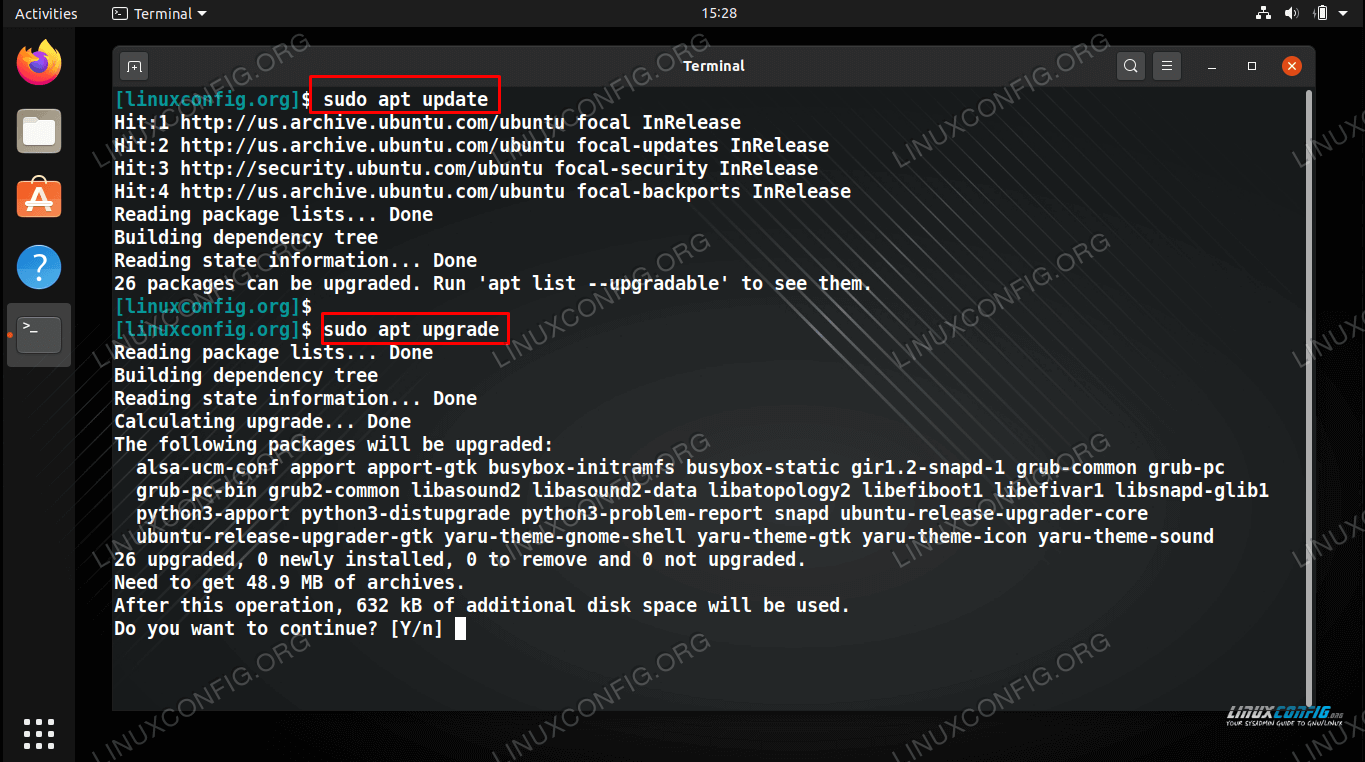

The apt-get upgrade command downloads and installs the updates in one go: $ sudo apt-get upgrade -y Having set up our system up-to-date with the remote repository, let’s download and install the changes available. Next, we’ll download and install available updates using the apt-get upgrade command. Also, it doesn’t include any hint on the command to list these upgradable packages. Ign: implies that the program ignores the packageĪgain, unlike the apt update command, apt-get doesn’t give the total number of packages available for upgrade.Get: signifies that a new version of the package is available.Hit: shows that there’s no change in the package version.

Also, we can notice the variation at the start of the lines: Here, the apt-get command fetches data on new updates for packages in the system. Naturally, we need admin access ( sudo) to run the command: $ sudo apt-get update First, we’ll update the system repository using apt-get update. To illustrate, let’s install new updates on our Linux system. Then, we’ll enter the following setup in the file: To set the progress bar, we’ll create the 99progressbar file in the /etc/apt/ directory. In addition, we can enable or disable the install progress bar using the 99progressbar file. This feature makes the apt utility more user-friendly when we compare it to the apt-get command. The output shows a progress bar, a unique feature of the apt program. 138477 files and directories currently installed.) Setting xserver-xorg-legacy/xwrapper/allowed_users from configuration file Get:1 jammy-updates/main amd64 gzip amd64 1.10-4ubuntu4.1

Gdb ghostscript ghostscript-x gir1.2-gdkpixbuf-2.0 gir1.2-gnomedesktop-3.0 gir1.2-gtk-4.0 gir1.2-mutter-10 gjs gnome-control-centerĢ04 upgraded, 0 newly installed, 0 to remove and 10 not upgraded.Īfter this operation, 17.5 MB of additional disk space will be used. Having set our local system to align with the remote repository, let’s upgrade the system with the available updates: $ sudo apt upgrade -y Listing Packages With aptĪgain, the apt upgrade command downloads and installs the newest versions of all packages on the system at a time. Also, it includes the apt list –upgradable command to list these upgradable packages. Run 'apt list -upgradable' to see them.įrom the output, apt gives the total number of packages available for upgrade. Notably, there’s info at the end of the apt update command output: 214 packages can be upgraded. Get:40 jammy/universe Translation-en Ħ1% Ģ14 packages can be upgraded. Here, we’ll use the following command: $ sudo apt update First, we’ll fetch data on new updates for packages on the system.


 0 kommentar(er)
0 kommentar(er)
